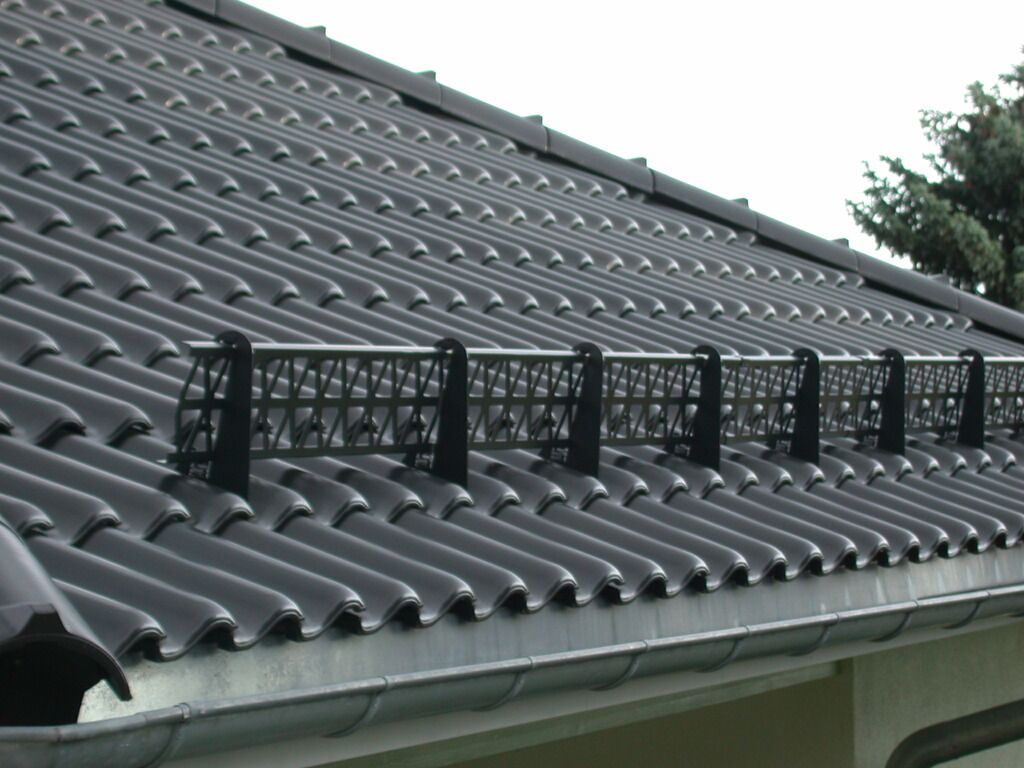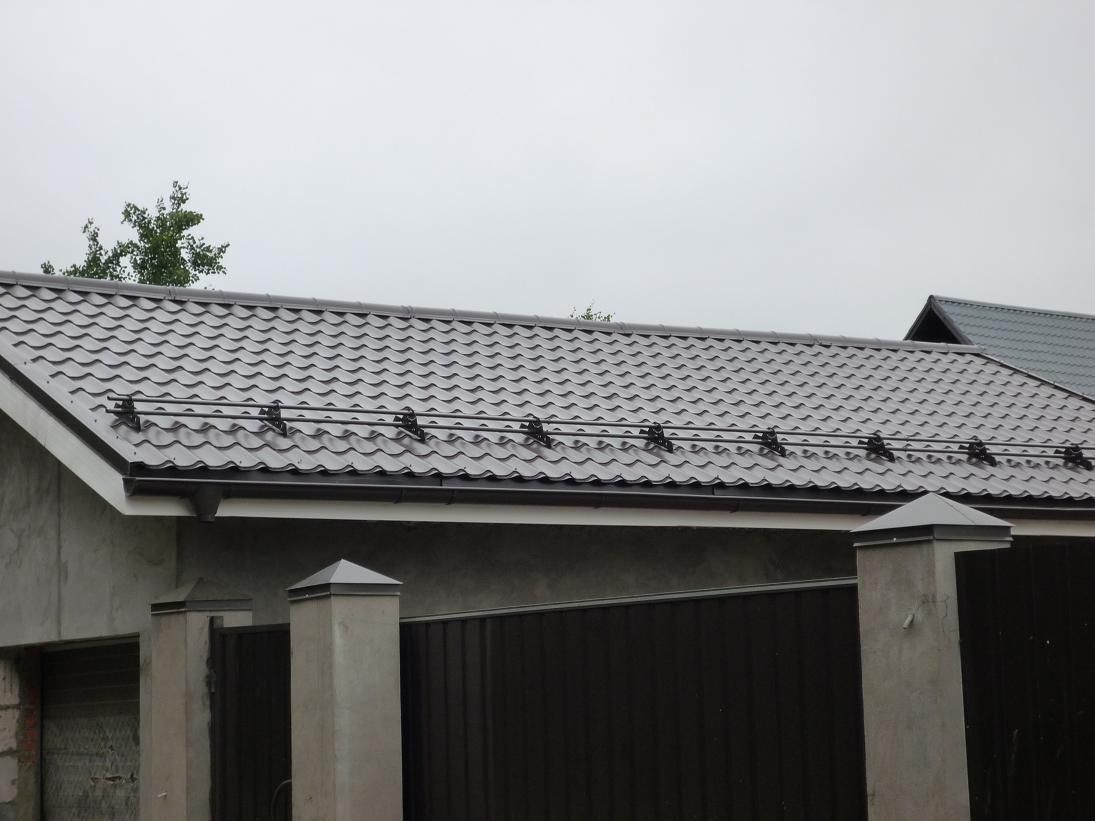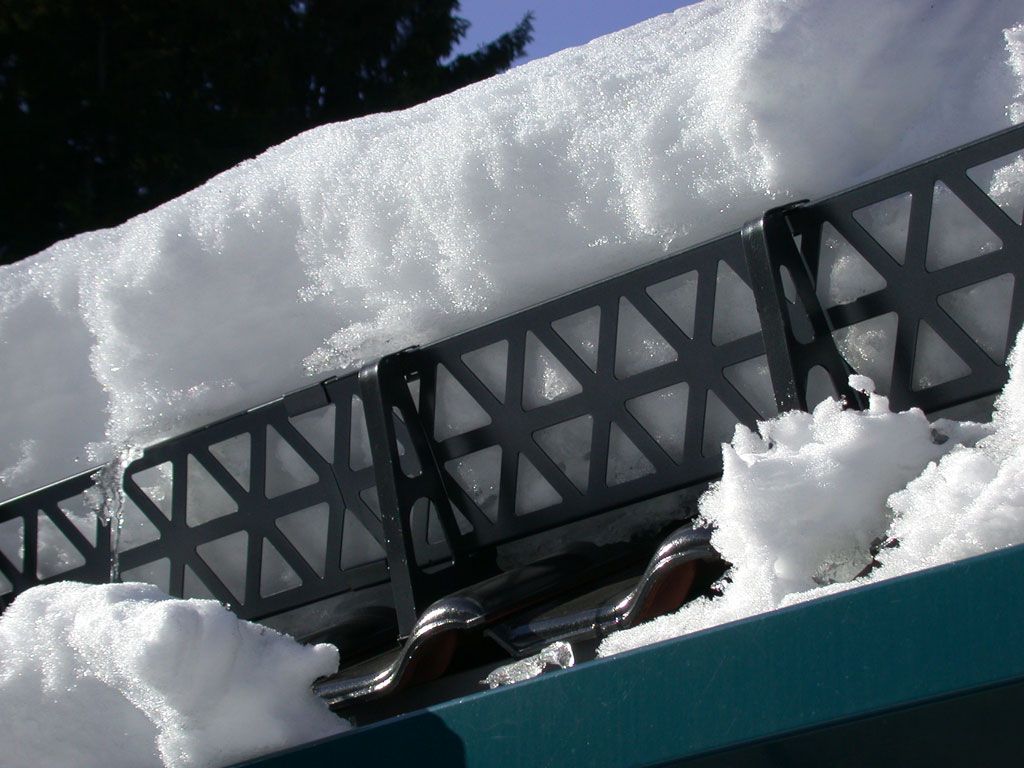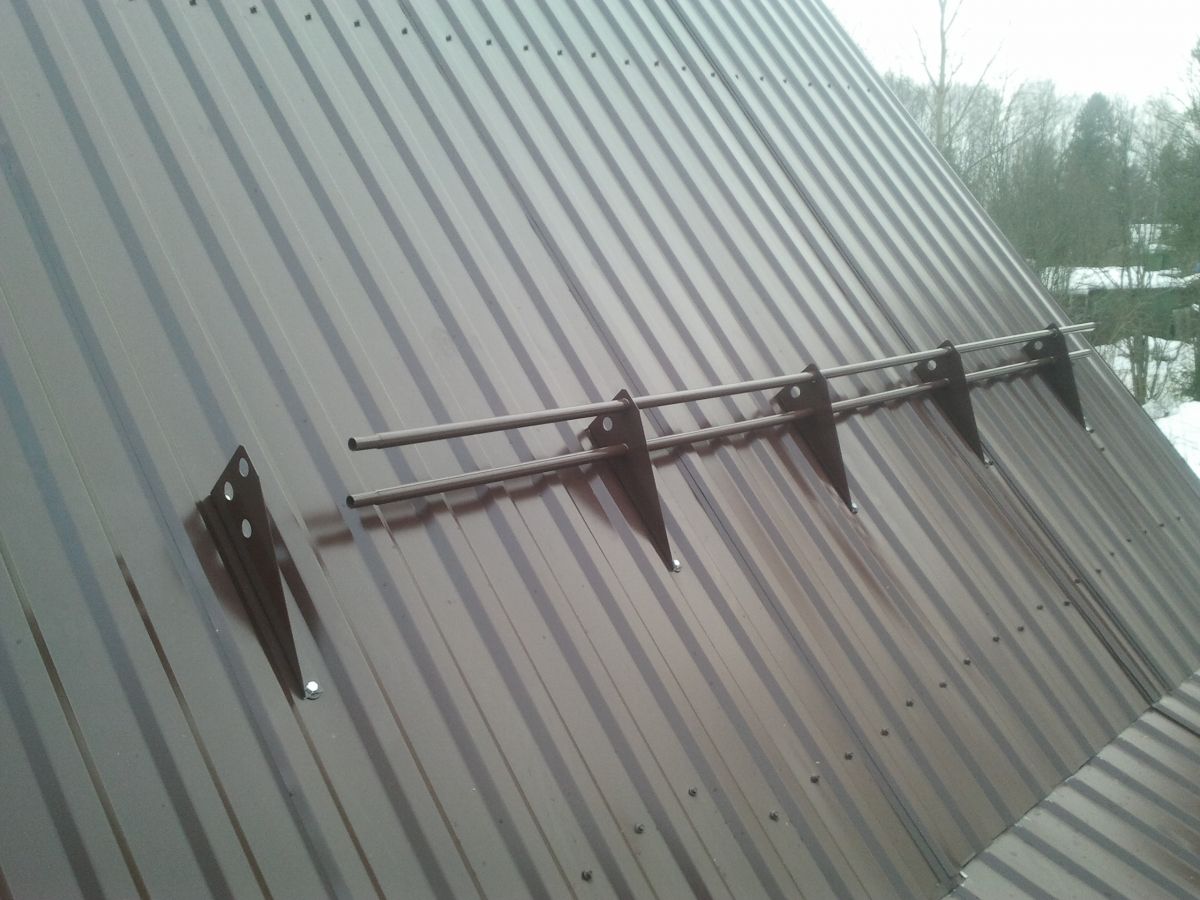In regions with a large amount of rainfall in the winter, snow accumulates on the roof. This not only has a bad effect on the roofing, but can also be dangerous if the weather changes unexpectedly, when heavy masses of snow, sliding along the ramp, fall down. To protect yourself from unwanted encounters with a mini-avalanche, you should think about installing special devices that can hold snow. And you can do this using the instructions for the manufacture of snow retainers on the roof with your own hands.
Content
Varieties
The following criteria may affect model selection.:
- type of roofing;
- roof structures;
- roof pitch;
- climatic conditions of the region of construction.
The level of snowfall directly depends on the construction zone. Such data are in table SP 20.13330.2011 “Loads and impacts”. When taking this factor into account, it is necessary to know that, for example, with a roof area of 50-60 sq.m. it withstands about 12 tons of snow. If the roof slope is more than 25 degrees, then snow load is calculated with a coefficient of 0.7.
As structural elements for snow retardants use:
- pipes;
- grids;
- plates or corners;
- hooks - snow stoppers.
Tubular snow retention. Small-diameter steel tubes are arranged in two rows, fixed with brackets, which are attached to the rafter legs or to the crate. Such snow retainers are reminiscent of window cornices, in which rings are designed to hang curtains.
How strong the design will be is affected by the interval between the bottom pipe and the edge of the roofing and the distance between the pipes. If you install longer pipes between the brackets, this will allow you to build up the structure. But it must be borne in mind that this will lead to a decrease in the strength of snow retainer pipes. To avoid this, you will have to reduce the pitch of the brackets.
Trellised snow retention. To create such a model, grilles are used, which are also attached using brackets. In order to make it, they resort to the use of a metal profiled sheet, which is structurally assembled by a frame. The frame has vertical crossbars. To increase the size of such snow retainers, it is necessary to combine the sections of the lattice among themselves.
These two types of snow retention can be used on any type of roof - sheet and roll materials, natural and metal roofing, seam roof and corrugated board.
Such models are reliable and able to hold snow on any slope. The length of the brackets can be in the range of 0.3-1.5 meters. Height depends on the roof.
With a roof slope of more than 60 degrees, snow retainers can not be installed, because snow melts regularly, it does not linger and is not dangerous.
For stingrays having average standard bias (approximately 30 degrees), the installation of snow retainers is simply necessary, because they are most at risk. This is due to the fact that they have a fairly large area, which contributes to the formation of large deposits of snow that go together. At the same time, snow retainers are subjected not only to static, but also to dynamic loading.
Lamellar and corner snow retention. They are made of sheet metal with galvanization or metal roofing sheeting. They are recommended to be installed on roofs with a slope of no more than 30 degrees.They are less durable and can be powerless in front of heavy snow layers. Install such snow retainers parallel to the ridge. It is a strong supporting element with a decorative overlay. It is made of roofing material.
These types of snow retainers are mounted on metal roofing. Moreover, corner ones are a kind of lamellar ones and are placed on coatings made of metal tile, corrugated board and galvanized iron. They can be installed not only on a new roof, but also on the one that is in operation. It is not recommended to use with a roof slope of more than 30 degrees, because they do not have sufficient strength and can not retain large snow masses.
Snow Hooks. Use for soft roofing, for example, roofing material or shingles. They are installed during the installation of the roof or overhaul. Given the type of roof, for such snow retainers, the maximum slope of the roof is no more than 15 degrees. They are installed on the entire roofing. There are two options for their placement: in a row or with a checkerboard pattern. Mounted snow hooks to the crate in stages, along with the laying of roofing material. They are attached in at least two places. As an economy, you can reduce the number of such hooks, leaving them in places where protection is more important. For example, above the entrance or parking.
When installing snow retainers on a soft roof, there is no need to make them powerful. This is due to the small slope of the roofs, where this type of coating is used and its texture. The roughness that it acquires due to basalt chips does not allow the snow to slip. These factors can provide added security.
Snow guards manufacturing instructions
The design of snow retainers is not particularly complicated and can be easily made with your own hands, having initial construction skills. Consider the manufacture of lattice snow retention, because it is suitable for all types of roofing.
To work, you will need the following tools and materials:
- Bulgarian;
- drill;
- level;
- welding machine;
- roulette;
- metal corner;
- pipes of medium diameter;
- hanging supports.
Before starting work, it is necessary to measure the roof. These data will help in calculating the future design. Work should be done on the ground. The finished product is installed on the roof.
After the measurement is made, it is worth deciding on the drawing of the snow retainer, sketching it on paper. We will use a metal corner for the grill frame. And pipes will act as reinforcing structural elements.
With the help of a grinder, we cut the blanks of the future snow retainer. Placement of metal corners on the surface is made in the form of a rectangle. By welding, fix the upper part of the frame. The next step is to check the structure using the building level. Its placement should be checked both horizontally and vertically. After making sure that the design is even, you should proceed to the final brewing of the frame in the corners. After this, the pipes are welded. They are placed perpendicular to the upper guide angles so that they form vertical diameters.
Next, repeat the process to make the required number of grids for snow retention. Once they are ready, we begin the process of hanging on pre-mounted suspension supports, which are better to buy in a hardware store, because they can be made in accordance with all technological requirements only at the factory. The supports are fastened with screws to the roof lathing.
DIY snow stoppers
Snow hooks are even easier to manufacture. Materials for work:
- scissors for metal;
- pliers or bending machine;
- self-tapping screws;
- steel sheet strips.
Before proceeding to production, it is worth making markings on sheet steel. Next, with the help of scissors for metal, workpieces with the required dimensions are made. Then these preforms are bent. In this case, one part remains straight, and the other forms a triangle at the end. The part of the support, where it is straight, is fixed with screws under the roof layer. The disadvantage of this type of snow retention is that it is not possible to install it on the finished roof. Its fastening occurs before the start of roofing.
Video: general recommendations and installation instructions for snow retainers
//www.youtube.com/watch?v=jZ4UMCahtRI
//www.youtube.com/watch?v=LlnEIJzFaq4








Alas, no comments yet. Be the first!